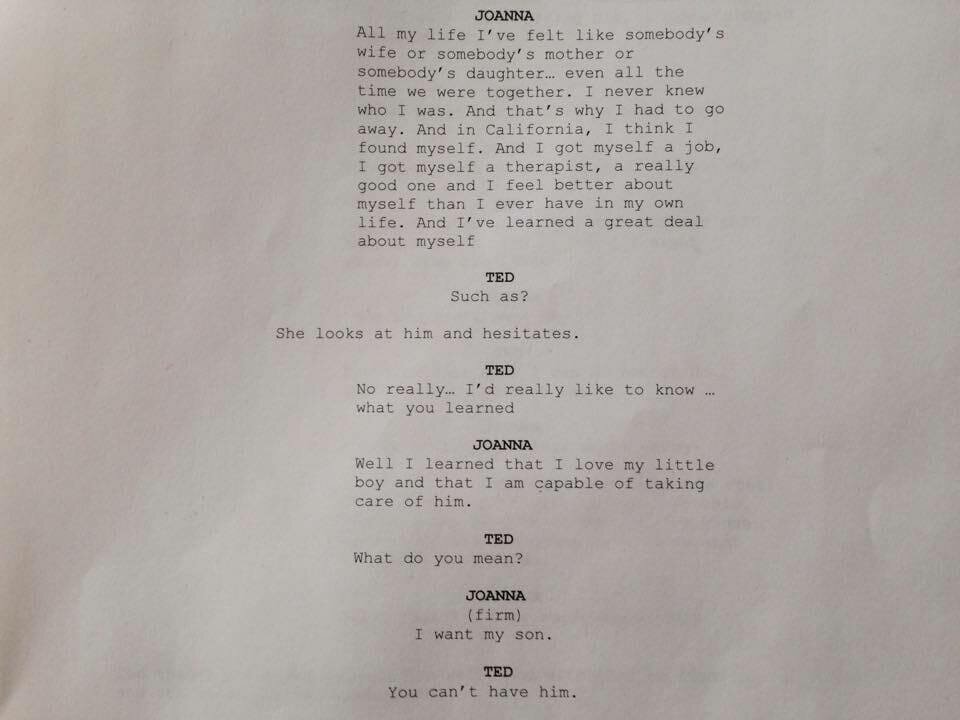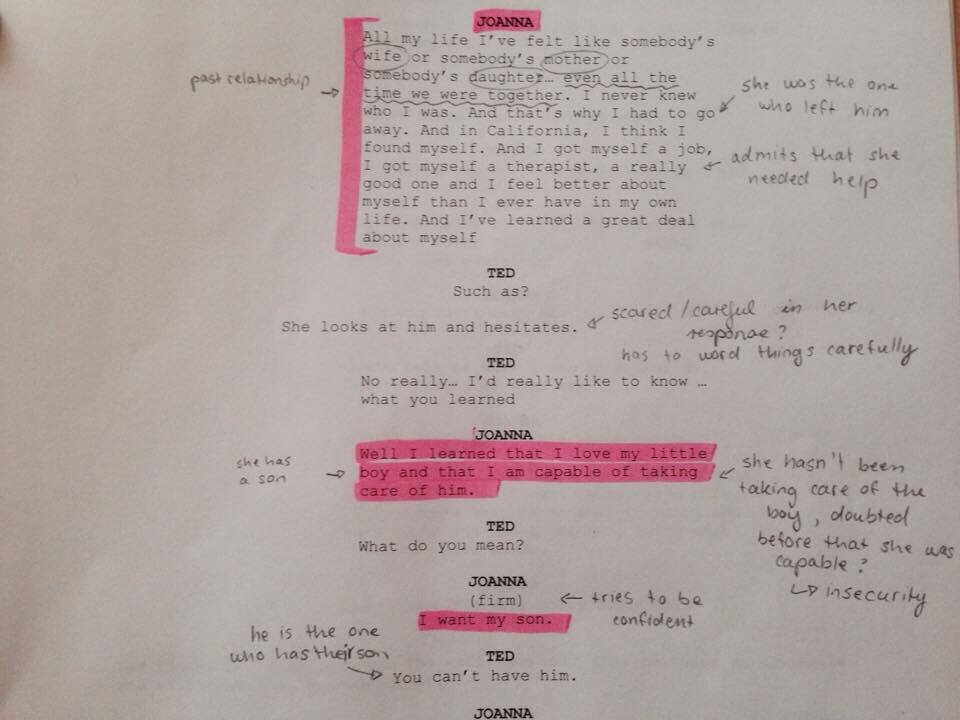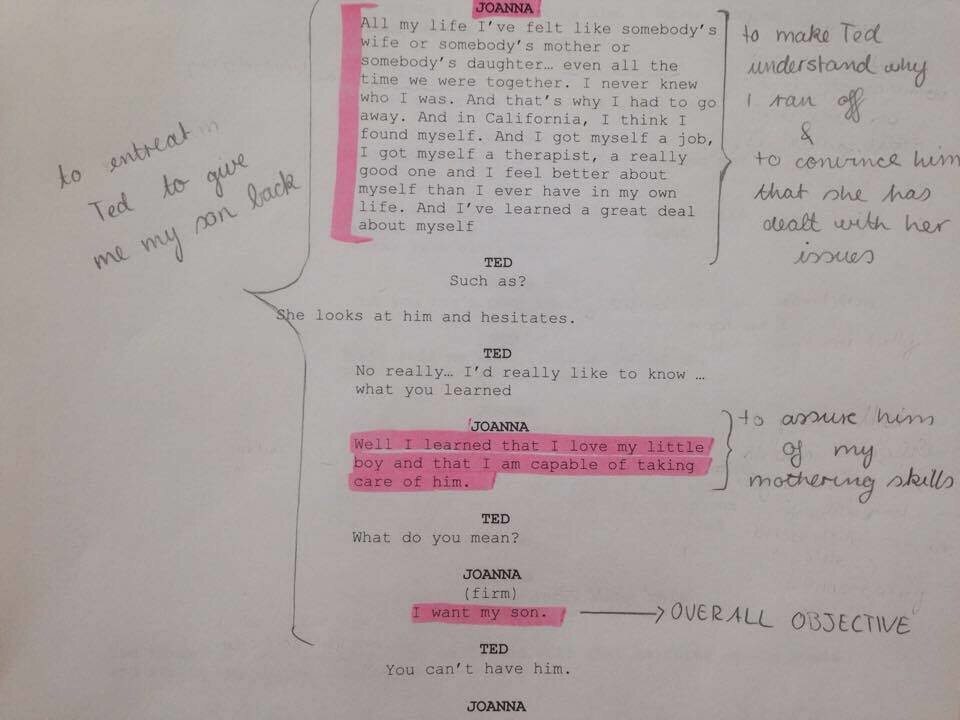Sometimes approaching a script might be a bit overwhelming or underwhelming in some cases. It’s hard to understand the story and why your character is doing what he/she is doing etc. But often, everything is right there in the text, you just have to look for it.
But… fret not! Here are some helpful tips and guidelines that might help you in your endeavor to make your character come alive.
THE FIRST READ
The advantage of reading it for the first time is that you as the actor are reading the script as a whole story, not just your part. It’s the only time you will read it as the audience. Even though it’s tempting to want to dive right in and start acting already, try to refrain from that in the first read.
READ, READ, READ… AND READ SOME MORE…
Reading the script over and over again is a very helpful tool. Different things will be highlighted each time, the story will unfold and make more and more sense as you read it, you get a better understanding of the characters, their relationship to one another and of the story as a whole.
Anthony Hopkins mentioned that he reads the script 100-250 times as a preparation, “I learn the text cold, read it maybe 100 or 200 times […] It’s a trick I play on myself just to make sure I really know it. Then I’m at ease, and I can improvise. […] this gives me a tremendous sense of ease and the power of confidence.”
Let’s take an excerpt of the restaurant scene between Joanna and Ted from Kramer vs. Kramer (1979):
WHAT INFORMATION DOES THE SCRIPT GIVE YOU?
As you go through the script, highlight your lines of course, but make sure you take all the information the script gives you into regard. Work with the text, make it your own.
What does the script tell you about your character? What do other characters reveal about your character?
As the character, ask yourself:
-
- Who am I?
- Where am I?
- When is it?
- Where have I just come from?
From just this little section, we know that Joanna and Ted have been in a past relationship together, presumably married. We know that Joanna was the one who left Ted and their son, and that he has been caring for their son since then. She admits that she needed help from a therapist, and we get the idea that she had previously put her identity/value/purpose in the fact that she is a daughter, mother and wife which frustrated her. She tries to come off very confident, because she knows this is a very delicate topic between them and is careful about her wording. She is nervous about his response.
WHAT DRIVES THE CHARACTER AND WHAT DRIVES THE STORY?
To get an overview of your character’s motives and objectives/goals, a helpful tool is to divide your script into ‘beats’. Legendary actress Uta Hagen explains that “a beat begins […] when an immediate objective sets in. It ends when that objective has succeeded or failed and new circumstances set in.”
What is your character trying to do? Is he/she trying to charm? Persuade? Convince? Guilt trip? Etc.
Remember to make your objectives strong active choices that will drive the story further. Weak objectives won’t help you.
Joanna’s overall goal is to get her son back. She knows all the arguments Ted can use against her, so in her attempt to have Ted agree to give her custody of their son, she knows she’ll have to word her desire very carefully. But she’s also convinced that she did the right thing in finding out who she was and justifies herself.
While Ted sincerely wants to understand her reasoning at first, he clearly does not want to give her custody for their son. Opposing objectives create great conflict!
A CLOSER LOOK AT OBJECTIVES
When going through the script, find the answers to the following questions in the script:
-
- What do I want?
- Why do I want it?
- Why do I want it now?
- What will happen if I don’t get it now?
- How will I get what I want by doing what?
- What must I overcome?
You can also refer to this article for more details and tips about these background questions.
While Joanna’s primary goal is to have her son back, subconsciously, she seems to prove to Ted and the world that she is a capable and independent woman. If she were to get her son back she would fulfill her role as a mother and make up for the mistake of leaving her son and Ted in the first place. If not, Ted will have won, she would be considered a failure and would have to live with guilt for the rest of her life. She has to overcome Ted’s refusal to give their boy back, and this is her first attempt after 15 months of being away.
This summary only starts to scratch the surface of Joanna’s internal fight, there is so much more depth to the whole situation, so make sure you go as deep as you can in your character development.
WITH YOUR BUDDY…
When rehearsing with your scene partner, I would recommend reading the script cold a couple of times before playing around with different approaches and objectives of your character. Even if it’s not the ultimate objective your character is going to have, have a go with different ones. It is especially effective when your character’s objective is the complete opposite of the other character.
E.g If your objective is to avoid the other person, it would be interesting to see how the scene unfolds if the other character is trying to flirt etc.
When practising scenes like that for while, you’ll get to see different elements, connotations, accentuations that you hadn’t considered before, but might use for the actual performance – and of course… it’s a lot of fun.
AT THE END OF THE DAY…
Ultimately, every actor will have his/her preferred approach. Some things work, some things don’t. Play around with it, have fun, use your imagination in cases where you’re stuck and… don’t stress.























